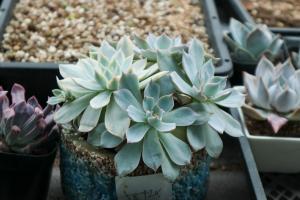Introduction
Newly planted arborvitaes are bushes that require special care and attention to thrive. Watering is a crucial aspect of their care, and it can make the difference between a healthy and vibrant bush and a dry and dull one. But how often should you water your newly planted arborvitaes to ensure they get the right balance of moisture? This article will explore the answer to this question and provide you with the necessary information to keep your new arborvitaes thriving.
Factors that Affect Watering Frequency
Several factors can influence how often you should water your newly planted arborvitaes. Soil type, weather conditions, plant size, and root depth are some of the essential considerations to keep in mind. Arborvitaes planted in sandy or loamy soils tend to dry out more quickly and may require more frequent watering than those in clay soil. Similarly, arborvitaes planted in hot and dry regions may need more irrigation than those in cooler and moist climates. The size of the plant and root depth can also affect watering frequency. Newly planted small arborvitaes may require more moisture than larger ones to establish their roots and grow.
It is essential to consider these factors when developing a watering schedule for your newly planted arborvitaes. Without this information, you risk over or under-watering your bushes, which can lead to damage or even death.
Watering Frequency for Newly Planted Arborvitaes
In general, newly planted arborvitaes require constant but not excessive moisture to establish their roots and stand up properly. This means that you should water the bushes regularly but avoid saturating the soil. A good rule of thumb is to water your newly planted arborvitaes at least once a week for the first six months after planting, and then reduce the frequency to once every ten days to two weeks in subsequent months.
However, you must adjust the watering frequency depending on the weather conditions and other factors discussed earlier. For instance, during hot and dry summers, you may need to water your newly planted arborvitaes more frequently than once a week. Similarly, if you notice the soil is dry and crumbly or that the foliage is turning brown or yellow, you may need to water the bushes more often to prevent them from wilting.
Watering Techniques for Newly Planted Arborvitaes
When watering your newly planted arborvitaes, it is essential to use the right techniques to avoid damaging the roots or foliage. One of the best ways to water your bushes is through deep soaking. This involves watering the base of the plant and allowing the moisture to percolate into the soil. Deep soaking helps the roots establish firmly and promotes healthy growth.
Another technique to consider when watering your newly planted arborvitaes is mulching. Mulching involves covering the soil around the base of the plant with a layer of organic material. Mulch helps to retain moisture, regulate soil temperature and prevents weed growth around the plant. It is best to use natural mulch, such as wood chips or shredded leaves, and avoid piling it too high around the base of the plant to prevent root rot.
Conclusion
Watering is a fundamental aspect of caring for newly planted arborvitaes. These bushes require constant but not excessive moisture to establish their roots and thrive. The frequency of watering depends on various factors such as soil type, weather conditions, plant size, and root depth. In general, watering the bushes at least once a week for the first six months after planting, and then reducing the frequency to once every ten days to two weeks is sufficient. However, you must adjust the frequency depending on the specific needs of your arborvitaes. Using the right watering techniques, such as deep soaking and mulching, can also help your newly planted arborvitaes grow healthy and vibrant.

 how many times do yo...
how many times do yo... how many planted tre...
how many planted tre... how many pine trees ...
how many pine trees ... how many pecan trees...
how many pecan trees... how many plants comp...
how many plants comp... how many plants can ...
how many plants can ... how many plants and ...
how many plants and ... how many pepper plan...
how many pepper plan...































